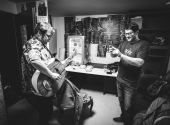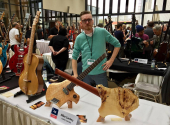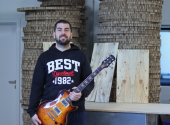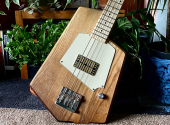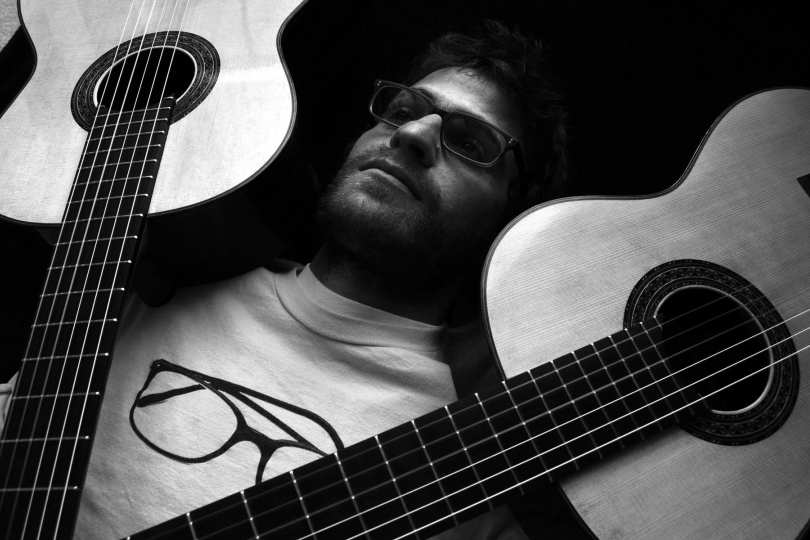
Dreamstruments #25: Koentopp Guitars
With the advent of more easily sound solid body guitars, jazz archtops have vacated the spotlight. But that doesn't mean they've lost their purpose. On the contrary. The quality archtop still hasn't been replaced. Guitarists who can make a top-notch instrument are always busy. And those who dream of such an instrument know well the most important makers. Dan Koentopp is certainly one of them. His instruments are a testament to the fact that sometimes good enough isn't good enough. Dan takes responsibility for making sure that the instrument a player gets from him is not only the best he can get but also the best the player gets from himself.
Discussions on musical instruments often revolve around a simple inverse proportion that Americans call "bang for buck". What kind of guitar to buy that won't discourage the beginner and at the same time won't cost a fortune? Is it better to spend more money on a guitar or on a combo to start with, if you need to buy both? The Dreamstruments series is about the opposite end – it's not about price. Not that the instruments of the manufacturer presented here today are attacking the positions of the most expensive ones. However, Koentopp guitars is particularly dedicated to guitars that traditionally require a premium price tag – and for good reason.
High-end archtops are simply expensive – there's no room to skimp. Due to the design, the creation of the individual parts cannot be entrusted to programmable machine tools; hands and a lot of care must be involved. Such instruments usually wear proudly the design of the wood of which they are made. They do not hide behind a layer of coloured polyurethane paint, so the workmanship needs to be perfect and without the slightest flaw.
By the 1950s, archtops were the standard for both acoustic and sound-playing jazz and other styles. With the invention of the Telecaster and other solid body guitars, not only did many players, but many makers switched gears. A cheaper manufacturing process and a less delicate product were a boon to traveling musicians and to the democratization of live electric guitar playing. It's just that archtops are still needed in the world. And there are still luthiers who will put the necessary amount of hard work and precision into their construction.
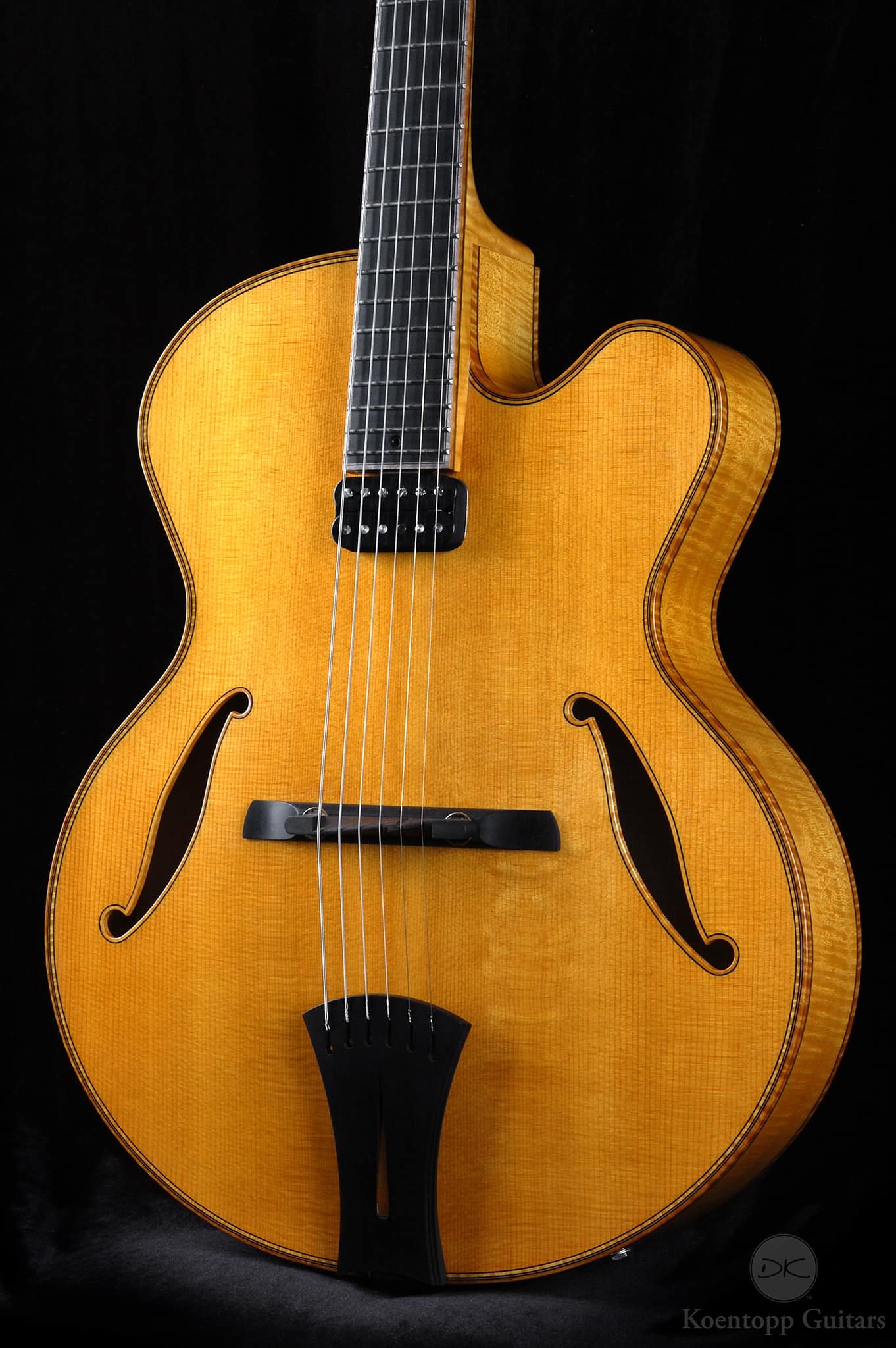
Raising the future guitar maker
Dan Koentopp has been playing guitar since the age of seven. Around the age of 14, he discovered a section in the library devoted to the construction of these instruments and immediately made a workshop in the basement with his parents' permission and starting making guitars with his father. His parents were his biggest role models: "I learned to work by watching dad. He designed scyscrapers and buildings out of concrete and steel. Using old-school drafting tools and hand drawings. He taught me how to build furniture out of wood and nails. This is how I learned the basics of carpentry. He worked hard and taught me to be resourceful."
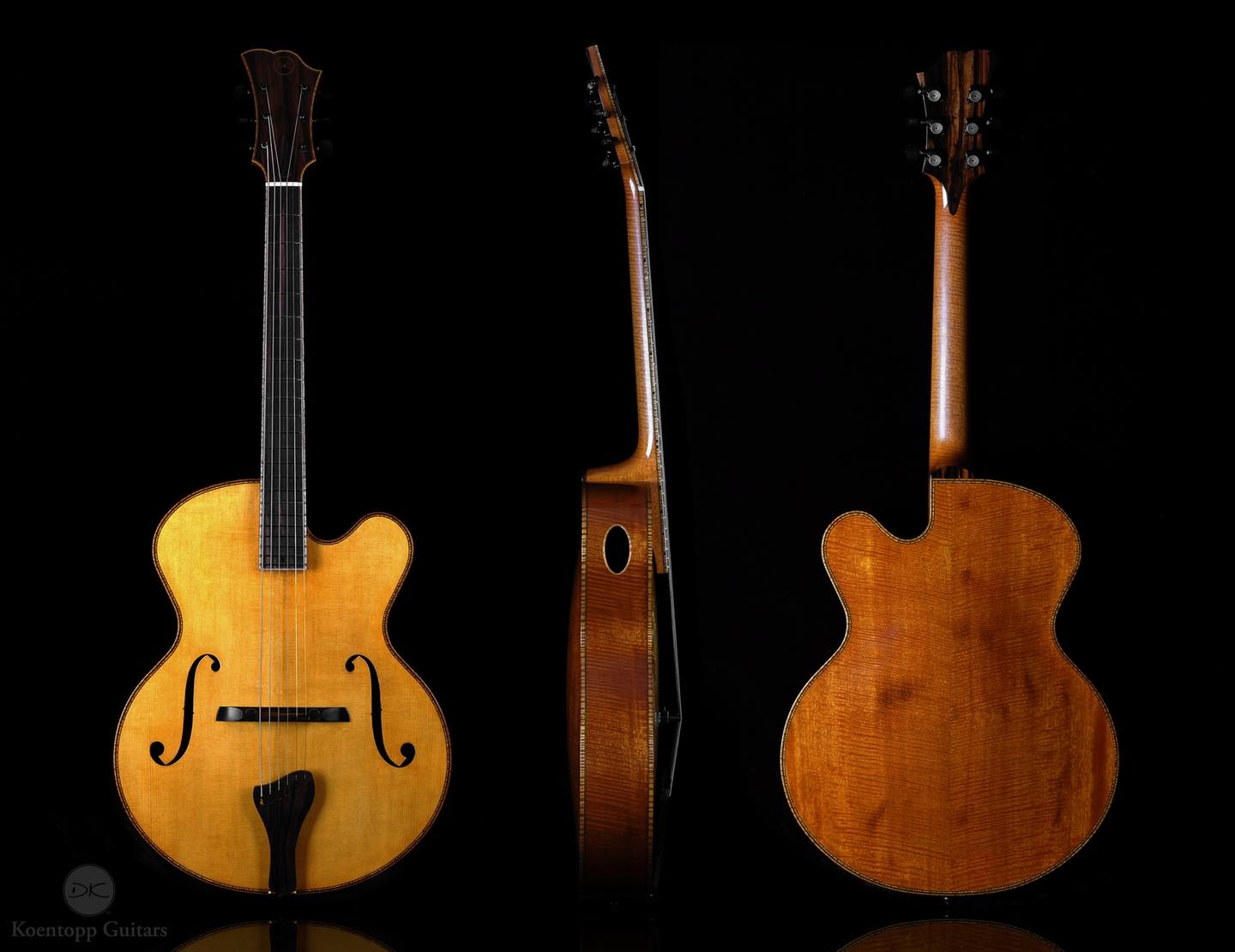
In college, Dan dealt mainly with guitars, and he had already begun to focus on semihollow guitars. It was at this time that he met violin maker Michael Darnton and began working in his restoration team, where he spent the next three years restoring rare museum pieces. He also worked on documenting and cataloguing them, which, as he says, was not exactly great fun, but it allowed him to learn about and thoroughly study the subtle differences in the work of individual makers and their techniques. "To examine, close up, the detail, the knife work and the overall tradition of some of the most important instrument makers of all time, is paramount in developing your eye," he says of his experience.
Classics and jazzbox, respect for tradition
While working in the restoration shop, Dan learned to appreciate handwork. "Michael’s work solely encompasses hand tools and tradition based upon methods from the seventeenth century and this is the foundation of my practice," Dan says, adding: "When you use handtools, you have a more physical conection with the making of the instrument. You’re allowed to feel things. To send something through a machine, it’s kind of meaningless, you can dial in the machine but you can’t really control it. When you do it by hand, you have the tactile feeling."
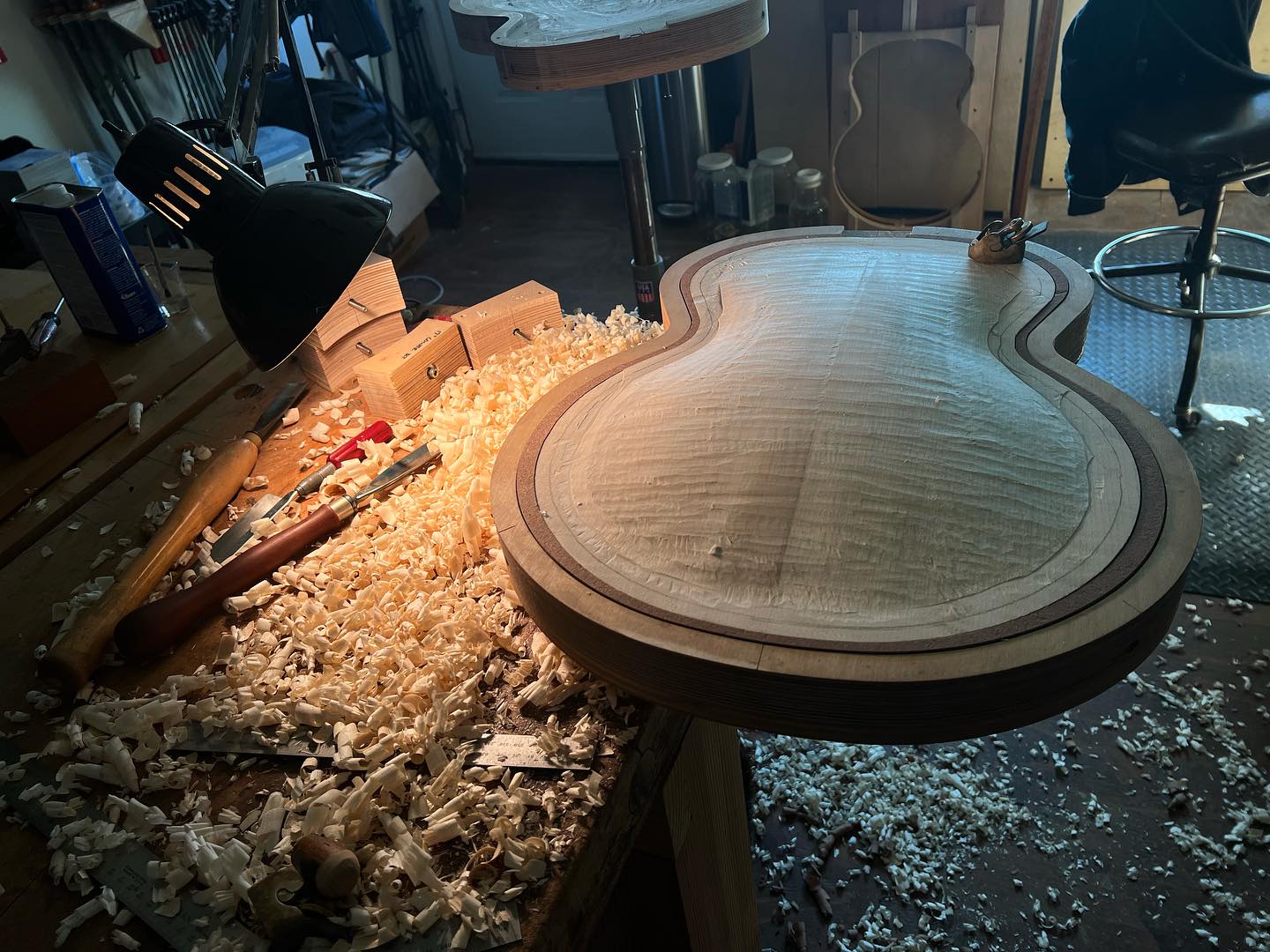
Memories of the basement workshop and the early days of woodworking with his dad further shape Dan's meticulousness. His guiding principle when making an instrument is that the customer doesn't see every rib on the finished instrument, but it's up to the guitar maker to make sure that every part is exactly as it should be and that every detail is absolutely perfect: "Consumers can connect to the fact that the object they’re buying was created by somebody’s hands and it means something! There’s energy in that. When you’re making something, there’s energy. Sometimes people can just feel it."
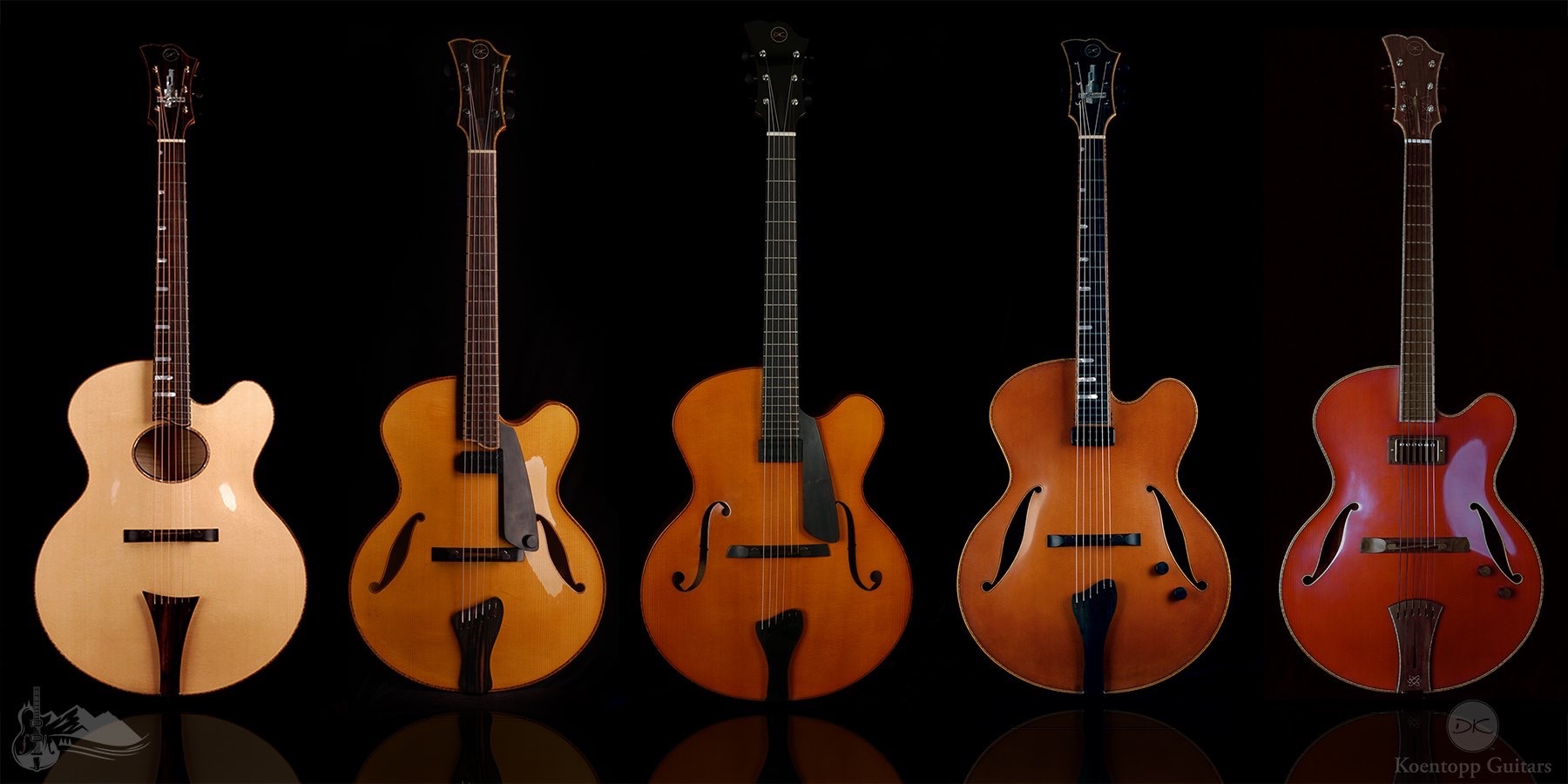
Born in Illinois, made in California
Koentopp's archtop guitars further emphasize a certain conservatism that Dan cultivates in the shop. Dan's range of instruments includes a variation on the Torres classical guitar, variations on the Telecaster in both classical and thinline style, and then, most notably, the four archtops that are most essential to his workshop. The names The Chicagoan, The Chicagoan Oval and Blue Line refer to his roots, while Amati clearly refers to the fiddling tradition which he advocates. "Each Koentopp Guitar starts as a vision shared between the player and myself. This collaborative process results in unique creations, meticulously crafted using classic construction methods," says Dan of his work.
The lively sound of these archtops reveals the large body and lightweight construction. Dan mentions that from his perspective, machine-made guitars are depleted of attention to manufacturing. This often results in them sounding best in one position. Hand production, he says, is able to eliminate some of the difficulties, making the sound of the instrument uniform across positions. "You go around the shop, you strum five instruments. One plays really strong, the others don't," Dan begins. And then there's a deaf spot somewhere, a so-called "wolf tone". But with classical guitars or violins you simply can't afford a wolf, good instruments just have to sound good in all positions. And that's the luthier's job.
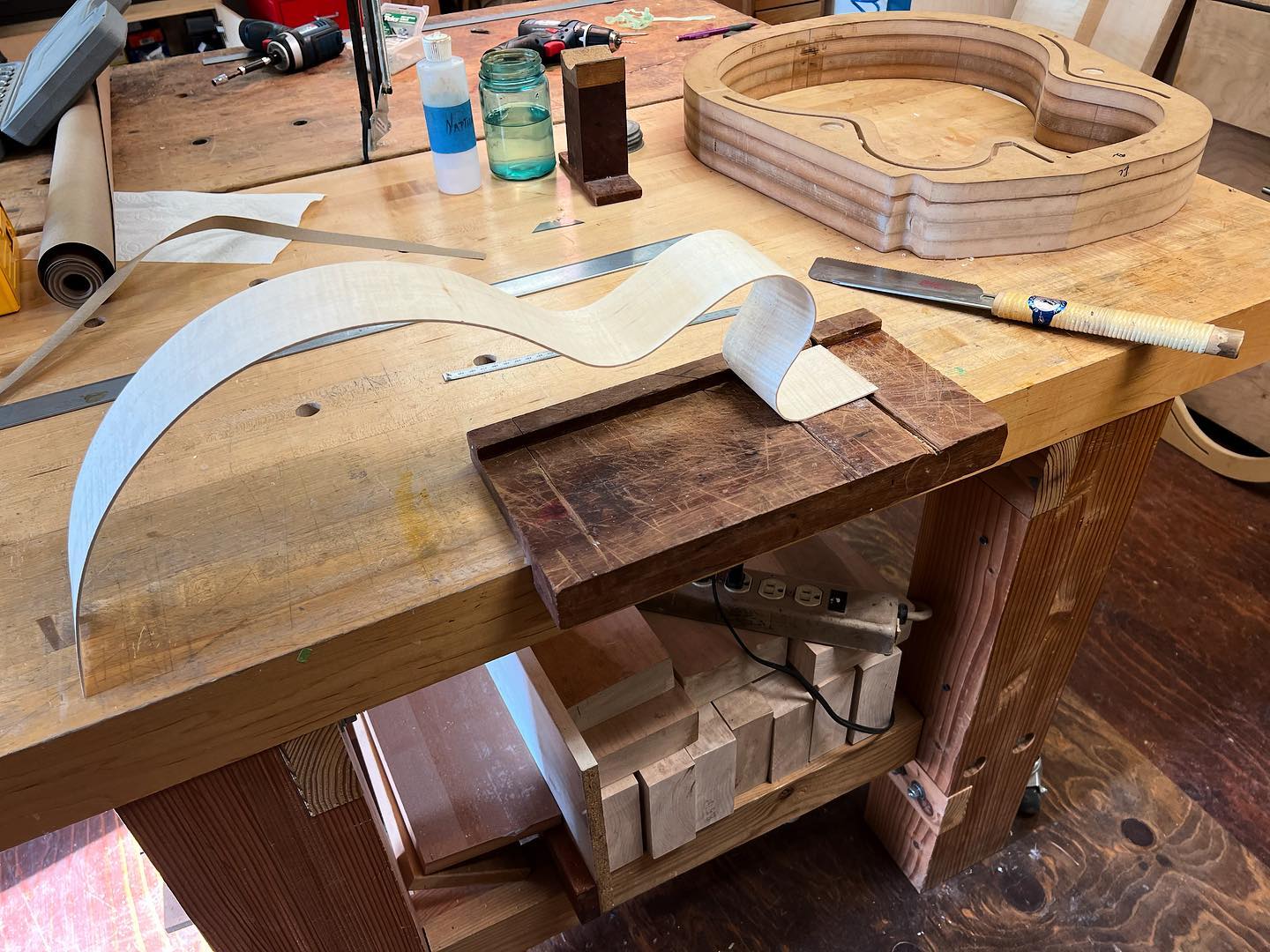
His instruments, however, reflect violin making in another way. Dan believes that a guitar today can have the same artistic value that until recently was attributed only to the legendary violins he worked on in the restoration shop. As he says, there will always be a place for machine-made guitars. "There will always be room for factory made instruments because people want a guitar that costs a hundred dollars. But at a certain point the small business owners, the artisans, can really make the client more happy than the factory ever could."
If you have found an error or typo in the article, please let us know by e-mail info@insounder.org.


